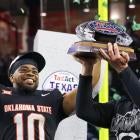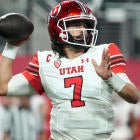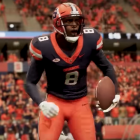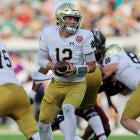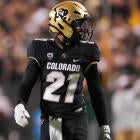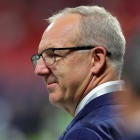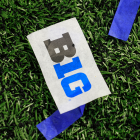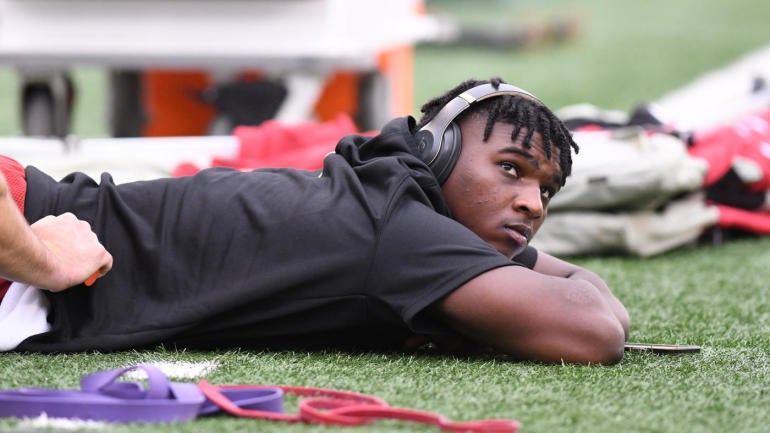
What does it cost to get a starting player in this current college football ecosystem?
It's a question begging to be answered but fraught with complications. Even in Year 3 of name, image and likeness where players getting paid has become increasingly accepted, it is still beyond challenging to get real, hard data on what players are making.
There is no centralized data. There are deals that are run through platforms like Opendorse that give a sense of what the market is doing, but there are still plenty of deals happening in the shadows and not officially run through any system.
With all that in mind, CBS Sports attempted to put together as accurate a market assessment as possible. We talked to NIL agents, collective operators, college coaches and personnel staffers, players and their parents and others with knowledge of the space. There will always be outliers, but this is our best effort at establishing the market range for Power Four starters at each position. These numbers also take into account what we believe to be the retention cost to keep a player from hitting the transfer portal.
QB market range: $500,000 to $800,000
Just like in the NFL, quarterback is the most valuable position in college football. There are some notable outliers here -- more on them in a second -- but the industry agrees that you can get a quality starting Power Four quarterback in the $500,000 to $800,000 range.
"It's QB1," said a Power Four collective operator. "That's the most important playmaker on your team and the most valuable."
During a recent interview with Greg McElroy and Cole Cubelic, Auburn coach Hugh Freeze said he couldn't bring himself to spend $1 million on a transfer quarterback, especially with Payton Thorne already on the roster. Thorne arrived at Auburn in spring 2023 after 26 games as Michigan State's starter. Freeze's comments invoked ire from collective operators frustrated with coaches complaining about the costs of doing business.
"I hate coaches who talk about NIL, and I don't want to spend a million bucks," said one NIL expert who works with multiple Power Four collectives. "You didn't have to spend a million bucks. You could have a great quarterback for less than that if you knew what you were doing."
There were schools willing to go where Freeze wouldn't, too. The high-end price for a Power Four starting quarterback is in the $2 million range, according to multiple people with deep knowledge of the market. "There's a couple people north of $2 million, but you're mostly in that $600,000-$800,000," the NIL expert said.
Like Great Osobor was the top end of the college basketball transfer market with his splashy $2 million deal to play for Washington, multiple people with knowledge of the space pointed to Miami quarterback Cameron Ward as the market leader out of the most recent winter and spring transfer portal windows. Ward, who threw for 6,966 yards and 48 touchdowns in two seasons as Washington State's starter, initially entered the NFL Draft but wasn't happy with his third- to fifth-round draft projection. He ultimately picked Miami over the NFL and Florida State.
The December transfer portal window was where the most quarterback action occurred as some programs aggressively pursued starters ahead of spring football. Two other high-profile quarterbacks near the top of the market in that cycle were Oregon quarterback Dillon Gabriel, who transferred from Oklahoma, and Notre Dame quarterback Riley Leonard, who arrived from Duke.
RB market range: $200,000 to $300,000
Following the NFL trend, running back is a position that typically is on the low end of a program's salary, but certain schools are willing to spend well beyond the range to either keep or acquire elite running backs.
Ole Miss running back Quinshon Judkins was well above this range last season before he entered the transfer portal in December and ultimately landed at Ohio State. Oregon State running back Damian Martinez was set to make $400,000 in Corvallis before he left for Miami, according to ESPN.
WR market range: $75,000 to $300,000
This is a highly important position but one where you need multiple starters, so the individual numbers aren't as high as other positions. You'd be surprised at some of the receivers contributing at a high level within the Power Four who are making less than six figures. Still, like any position, competition over the top receivers to hit the transfer portal can drive up value.
OL market range: $350,000 to $500,000
A high-end left tackle can make more than this range, but similarly there can be value found at the guard positions. It's an interesting position where you need a lot of them, but you also can never have too many offensive linemen. A lot of money is spent on retention to prevent the top offensive linemen from ever hitting the market, which mirrors what typically happens at the next level.
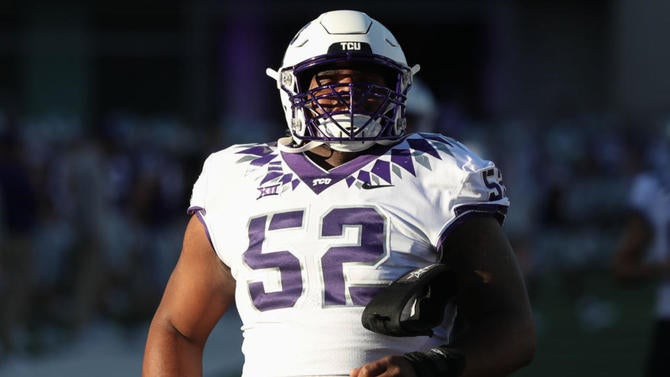
DL market range: $250,000 to $600,000
Like Freeze and quarterbacks, LSU coach Brian Kelly didn't like what he saw in the market when pursuing defensive line reinforcements. "We're not in the market of buying players," Kelly told television station WAFB. "Unfortunately, right now, that's what some guys are looking for. They want to be bought."
Despite his protestations of not buying players, the truth is the market may have been too rich for LSU's liking. The demand far ourstripped the supply for defensive tackles in this most recent transfer portal window, sending values through the roof and skewing the market.
One Power Four collective operator said their school was able to get multiple defensive linemen for less than the bottom end of the above range. Conversely, multiple sources pointed to Oklahoma transfer Damonic Williams (TCU) and Oregon transfer Derrick Harmon (Michigan State) in the high six figures to low seven figures range. If you wanted a starting-caliber defensive tackle this spring, you had to pay up.
Edge-rushers can still warrant big money, and some even in that nearly seven-figure range, but the market has deflated a bit overall, according to sources in the space. You can generally get a quality edge-rusher in the neighborhood of $500,000 or slightly more.
"Football players at a million dollars is rare right now," said one operator of multiple collectives.
LB market range: $100,000 to $300,000
This may have been the hardest position to pin down because there was a disparity in conversations with sources in the cost between an elite off-ball linebacker who can rush the passer and a starting middle linebacker. Multiple insiders put the high end at $600,000, which admittedly feels high for a traditional off-ball linebacker, but it makes more sense when you think of getting a player like former Alabama "linebacker" Will Anderson at that value.
DB market range: $120,000 to $225,000
There are some schools that really value this position and are willing to spend up on it, but by and large, it is one of the cheaper positions in which to acquire starting talent. The top end of the cornerback market for surefire, elite starters is in the $250,000-$400,000 range, according to multiple sources.
Safeties aren't quite as in demand as top cornerbacks, but when an elite player like No. 1 overall transfer Caleb Downs (from Alabama to Ohio State) becomes available, multiple programs are willing to spend beyond the typical range.













